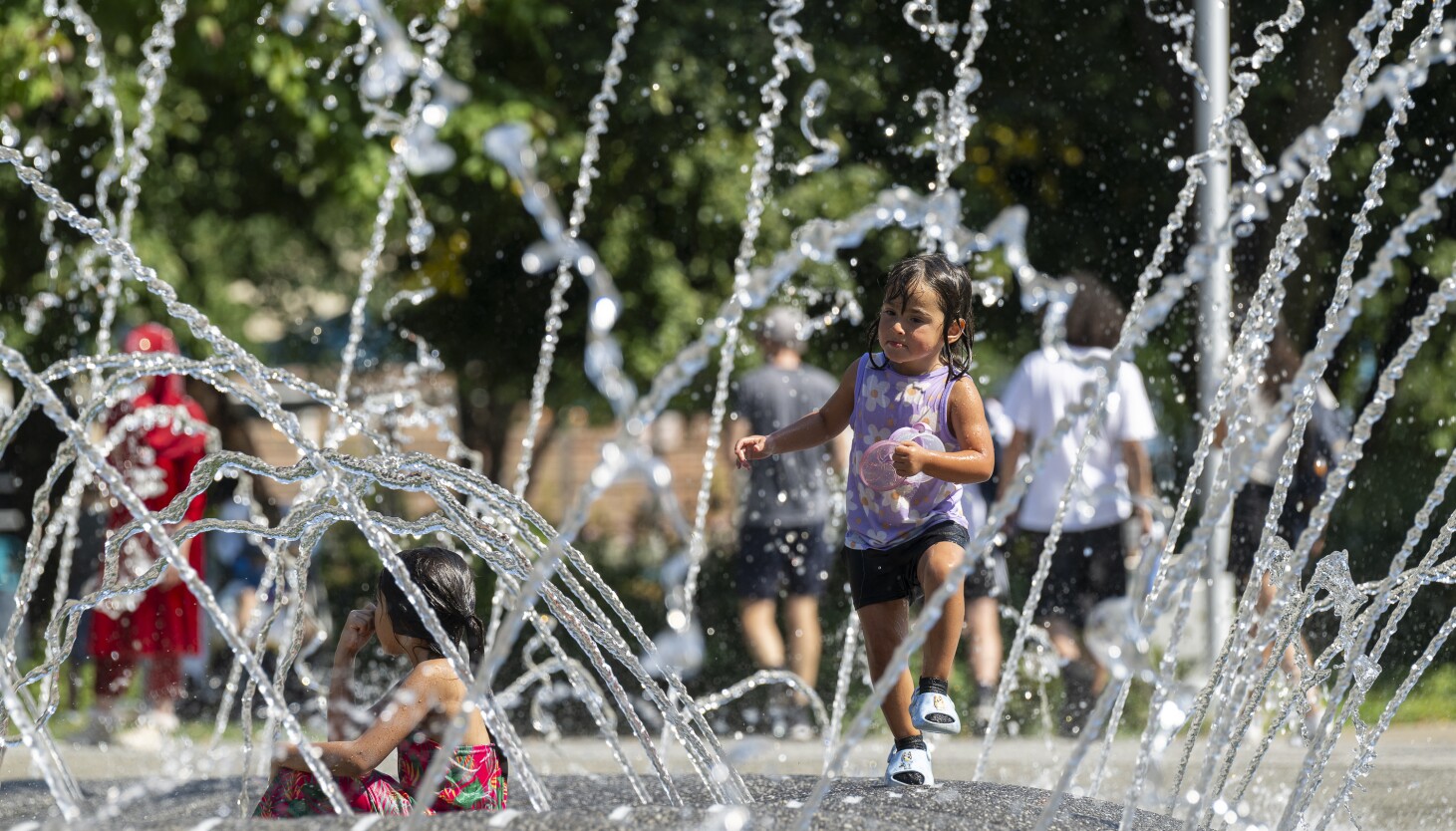Air pollution worsened Monday, contributing to unhealthy conditions for people with respiratory illnesses, outdoor workers, young children and seniors.
Forecasters say ozone pollution reached levels “unhealthy for sensitive groups” as the heat index also climbed to extreme temperatures. The bad-air warning remains in effect until Tuesday night.
Ozone pollution is caused when emissions from cars, trucks, factories and other sources interact with sunlight. That causes chemicals to cook in the air and create a dangerous type of pollution that is most common in summer.
The pollution levels are particularly bad for people with asthma and other lung conditions. Those who work outdoors should shorten their time in the heat, officials advised. Older adults and the very young may also be vulnerable to the poor air quality.
The high Monday reached 96 degrees, one degree shy of the Aug. 26 record, and the heat index, the combination of temperature and humidity, hit 110 across the area, with O’Hare reaching 107 degrees, the National Weather Service said.
The heat didn’t stop Wiley Feinstein and Mark Burnell from playing tennis Monday at Diversey Tennis Center.
“When the weather’s hot in Chicago,” Feinstein said, “you just do it anyways.”
It was a slow day for Jeremy Browning, working outside at nearby Bacino’s Italian Grill.
On the clock since 10 a.m., Browning said he was “drinking as much water as possible.”
Asked if he was worried about the air pollution warning, he said, “I wish I could care about that kind of thing, but I had to make money [and] my job is outside.”
Chicago Public Schools canceled outdoor activities Monday, the first day of the new school year. The National Weather Service issued an excessive heat warning that is in effect until 10 p.m. Tuesday.
The city compiled a map with locations of community service centers, libraries, police district sites and other places where residents can try to escape the heat. Call 311 to find a cooling center or request a well-being check for someone.
The Illinois Tollway is also operating 24/7 hot weather patrols to try to help stranded motorists who call *999, Illinois Tollway dispatch or Illinois State Police to get out of the heat quickly. As for rail transportation, Metra has issued a “temperature-based speed restriction,” which could cause delays in the agency’s train schedules.
Officials with ComEd say the power grid hasn’t been affected, though it noted that using fans, replacing air filters and installing window coverings are ways to save energy during times of extreme heat.
Some forest fire smoke from Canada may also be contributing to “moderate” fine-particle pollution, though the fires from the north are nowhere near the size of those seen last year.
“The air quality problem this week will not be nearly as intense as last year during the Canadian wildfires, but it will be important for folks to take precautions,” said Illinois State climatologist Trent Ford. “This week’s problem is mainly ozone, which is more effectively created during heat waves.”
(3/4) An Air Quality Alert continues through Tuesday for northeastern IL, and now includes northwest IN. Air quality is expected to be at unhealthy levels for sensitive groups. Limit prolonged outdoor activity, especially those with chronic respiratory illnesses. #ILwx #INwx pic.twitter.com/coEYEVSx4r
— NWS Chicago (@NWSChicago) August 26, 2024
With this week’s temperatures climbing into the upper 90s, it’s possible that this summer will be as much as 2 degrees higher than the normal average over the last 30 years, Ford said.
That heat and sun make conditions ripe for ozone air pollution, he added.
“It’s not unusual to have concurrent extreme heat and air quality problems, especially in cities,” Ford said.
Ozone pollution is a recurring problem in Chicago. The region has never been in compliance with federal air standards, a trend the state can begin to fix by adopting policies that speed the transition to electric cars and trucks, said Brian Urbaszewski with the Respiratory Health Association in Chicago.
More electric vehicles “would dramatically reduce dangerous air pollution,” he said.
As for temperatures, late August has historically not been as hot as this week.
The hottest Aug. 27 on record at O’Hare Airport is 97 degrees, set in 1973, Ford said. There’s a chance that record could fall Tuesday, with high temperatures forecast to hit 99 degrees, according to the National Weather Service.
Heat and pollution can also vary greatly on a given day depending on the area of the city. A study last year found the Southwest Side to be the hottest area of Chicago during one day when heat and humidity were analyzed.
(4/4) After Tuesday’s dangerous heat, conditions gradually improve through the remainder of the week. Periodic chances of storms are expected during this time, with the potential for severe storms, particularly late Tuesday afternoon and evening. #ILwx #INwx pic.twitter.com/Mg6wq0P89X
— NWS Chicago (@NWSChicago) August 26, 2024
